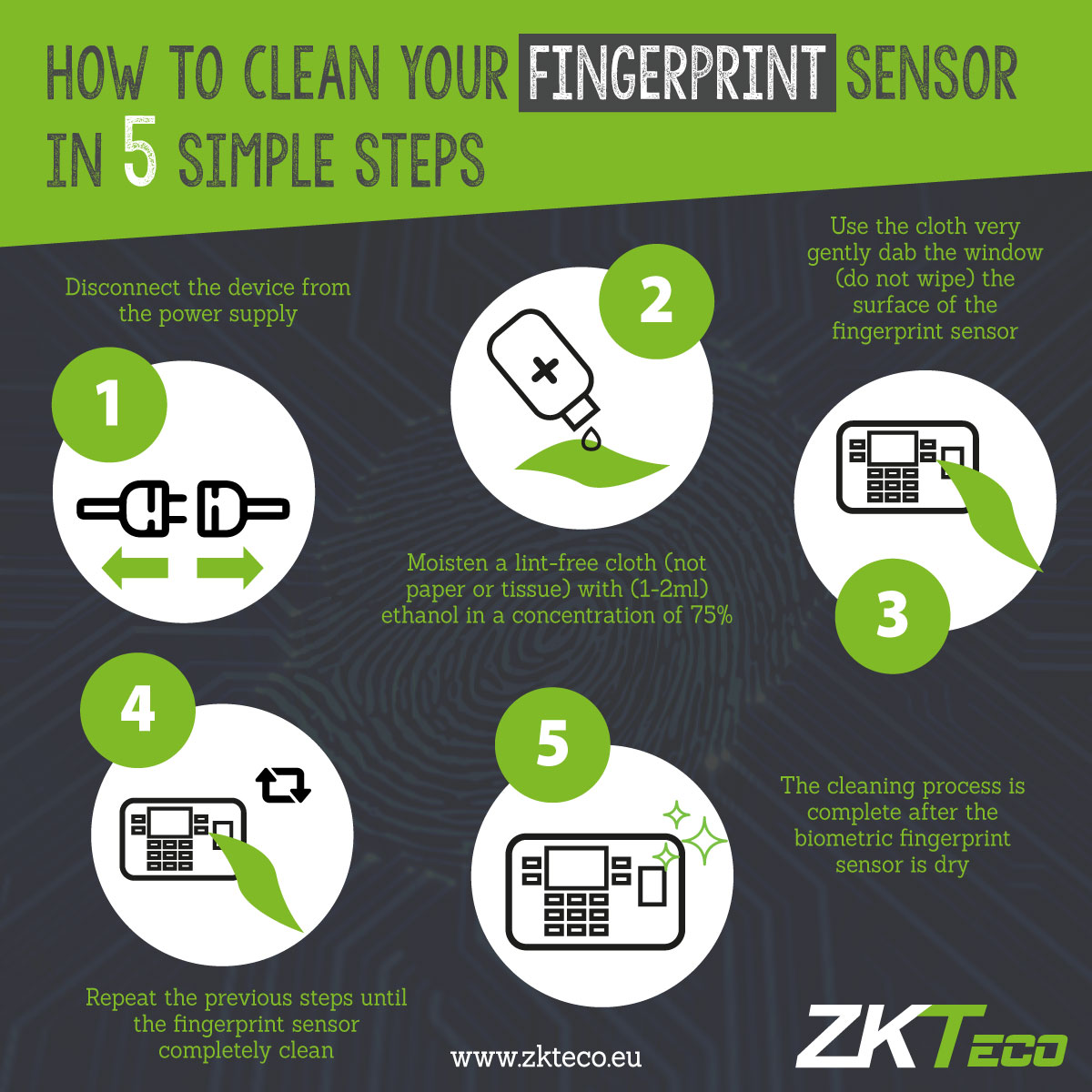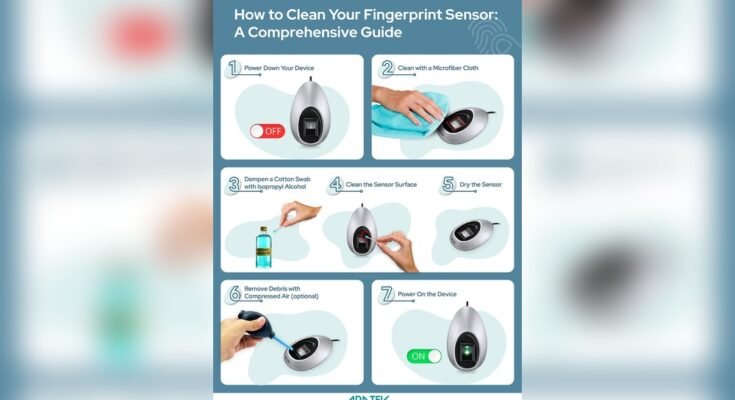Your biometric fingerprint scanner is a powerful tool that helps keep your personal and professional spaces secure. But did you know that dirt, oils, and smudges can affect its accuracy and performance?
If your scanner isn’t working as smoothly as it should, cleaning it properly might be the simple fix you need. You’ll discover easy, effective steps to clean your biometric fingerprint scanner safely—so it stays reliable and responsive every time you use it.
Keep reading to protect your device and ensure your security stays top-notch.
Why Clean Your Fingerprint Scanner
Cleaning your biometric fingerprint scanner is important. It helps keep the scanner working well. Dirt and grime can stop the scanner from reading fingerprints correctly. Regular cleaning keeps the device reliable and safe to use. A clean scanner saves time and avoids errors during access. It also extends the scanner’s life by preventing damage.
Impact Of Dirt On Scanner Accuracy
Dirt on the scanner blocks fingerprint details. This makes it hard for the sensor to read your print. Smudges and dust cause false rejections or failed scans. Poor accuracy can lock you out or let in the wrong person. Cleaning removes these barriers and keeps scans fast and precise. A clean scanner means fewer errors and better security.
Common Contaminants On Scanners
Fingerprint scanners collect oils from skin. Dust and dirt from hands also build up. Sweat can leave moisture that affects the sensor’s surface. Dust from the environment settles on the scanner too. These contaminants mix and blur fingerprint patterns. Cleaning removes oils, dirt, and moisture for clear scans. A clean scanner surface helps the sensor work well every time.

Materials Needed For Cleaning
Cleaning a biometric fingerprint scanner requires specific materials to avoid damage. Using the right supplies keeps the scanner working well and extends its life. Prepare your cleaning area with these essential items before starting.
Safe Cleaning Solutions
Choose gentle solutions that do not harm the scanner’s surface. A mixture of water and isopropyl alcohol (70% or less) works well. Avoid harsh chemicals like bleach or ammonia. These can damage the scanner’s sensor and screen. Use only a small amount of solution on your cloth.
Recommended Tools And Cloths
Soft, lint-free cloths are best for cleaning fingerprint scanners. Microfiber cloths are ideal because they do not scratch the surface. Avoid paper towels or rough fabrics. Cotton swabs help clean small edges and corners. Use a small, soft brush to remove dust from tight spaces without scratching.
Step-by-step Cleaning Process
Cleaning a biometric fingerprint scanner keeps it working well and accurate. Dirt and oils can block the sensor, causing errors. Follow these simple steps to clean the scanner safely and effectively.
Powering Off The Device
Start by turning off the device. This step prevents damage and avoids accidental inputs. Unplug the device if possible. Ensure the scanner is completely off before touching it.
Removing Dust And Debris
Use a soft brush or a dry microfiber cloth. Gently wipe the scanner surface to remove loose dust and dirt. Avoid pressing hard to prevent scratches. Small particles can harm the sensor if left on.
Applying Cleaning Solution
Apply a small amount of isopropyl alcohol or screen cleaner to a clean cloth. Do not spray the solution directly on the scanner. Lightly wipe the surface in circular motions. This removes oils and stubborn grime safely.
Drying The Scanner Surface
Use a dry microfiber cloth to wipe the scanner. Remove any moisture left from the cleaning solution. Allow the scanner to air dry for a few minutes. Ensure no liquid remains before turning the device back on.

Tips To Maintain Scanner Cleanliness
Keeping a biometric fingerprint scanner clean is important for its accuracy and lifespan. Dirt, oil, and dust can block the sensor and cause errors. Follow simple tips to keep your scanner working well and looking good.
Regular Cleaning Schedule
Set a routine to clean your fingerprint scanner. Clean it at least once a week if used often. Use a soft cloth to wipe the surface gently. This prevents buildup of dirt and oils from fingers. Regular cleaning keeps the sensor clear and responsive.
Avoiding Harsh Chemicals
Do not use strong cleaners or alcohol on the scanner. Harsh chemicals can damage the sensor or its coating. Use a mild soap with water or a special electronic screen cleaner. Always apply cleaner to the cloth, not directly on the scanner. This protects the device and keeps it working longer.
Handling With Clean Hands
Make sure hands are clean before using the scanner. Dirt, grease, or moisture can block the sensor and cause errors. Wash hands or use a hand sanitizer before scanning. Clean fingers help the scanner read prints accurately every time.
Troubleshooting Scanner Issues
Biometric fingerprint scanners can face issues that cleaning alone may not fix. Sometimes, the scanner still does not work right after you wipe it. Troubleshooting helps identify the problem and decide what to do next.
When Cleaning Doesn’t Help
Check if the scanner’s surface is scratched or damaged. Scratches can cause poor reading of fingerprints. Also, make sure your fingers are dry and clean. Moisture or dirt on fingers can block the scanner.
Restart the device that uses the scanner. This can reset software errors. Update the scanner’s drivers or firmware. Outdated software may cause scanning problems.
Try scanning a different finger. Sometimes, specific fingerprints may not register well. Test the scanner in different lighting conditions. Bright light or shadows can affect performance.
When To Seek Professional Help
Contact a technician if the scanner remains unresponsive after basic steps. Internal hardware issues need expert repair. Avoid opening the device yourself. This can void warranty or cause more damage.
Professional services can clean inside the scanner safely. They can replace faulty parts if needed. If the scanner is part of a security system, get help quickly. A broken scanner can risk your security.

Frequently Asked Questions
How Often Should I Clean A Biometric Fingerprint Scanner?
Clean your fingerprint scanner weekly to ensure accurate readings. Frequent use collects oils and dirt, affecting performance. Regular cleaning maintains device longevity and user hygiene.
What Materials Are Safe For Cleaning Fingerprint Scanners?
Use a microfiber cloth and isopropyl alcohol (70% or less). Avoid abrasive materials or harsh chemicals that can damage the scanner surface. Always power off the device before cleaning.
Can Water Damage A Fingerprint Scanner?
Yes, water can seep into electronic parts and cause damage. Use minimal liquid and apply it to a cloth, not directly on the scanner. Dry the surface thoroughly after cleaning.
Why Does My Fingerprint Scanner Fail After Cleaning?
Residue or moisture left on the scanner can cause failures. Ensure the scanner is completely dry and free of debris before use. Use gentle cleaning methods to avoid sensor damage.
Conclusion
Cleaning a biometric fingerprint scanner keeps it working well. Use a soft cloth and gentle cleaner for best results. Avoid harsh chemicals or rough materials that may damage it. Regular cleaning prevents errors and improves scanner accuracy. Take a few minutes often to keep it clean and safe.
Small steps protect your device and save you time later. Keep the scanner ready for quick, easy access every day. Simple care helps your technology last longer and work better.
